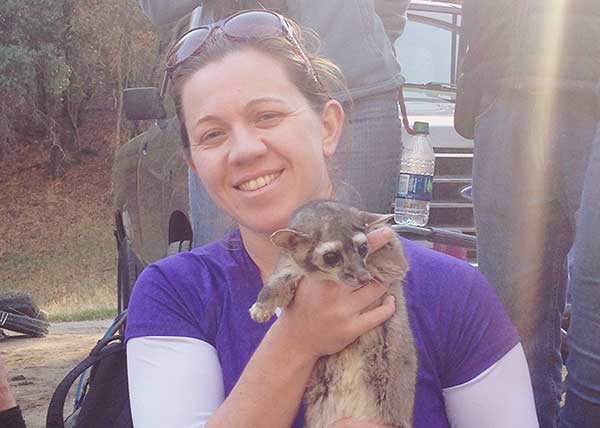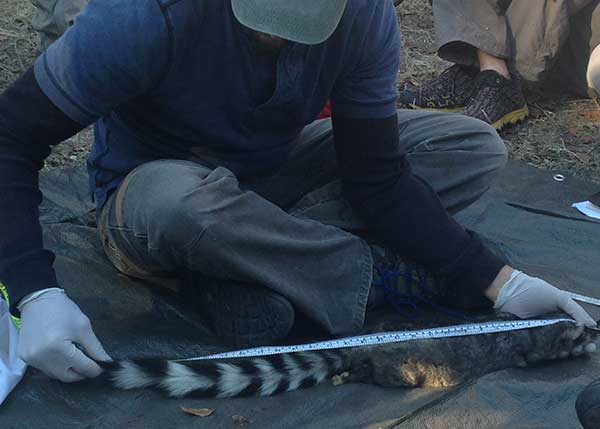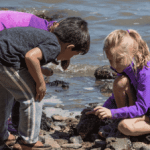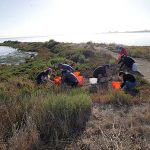Blog
Out In The Field: Ringtail Research
At CuriOdyssey, we’re committed to not only providing our animals with the best possible care, but also ensuring that our impact goes beyond our walls through a variety of conservation efforts.

CuriOdyssey’s Ringtail, “Amala”
Our latest conservation effort is focused on ringtail field research. And if the animal name “ringtail” sounds familiar to you, it’s likely because you’ve seen one of these creatures at CuriOdyssey. Our science and wildlife center is home to a female ringtail named “Amala.” And while Amala has her routine at CuriOdyssey, researchers are still working to fully understand ringtails’ lives in the wild.

CuriOdyssey animal keeper Megan gets up close with a ringtail during field research
David Wyatt, a Biology professor at Sacramento City College, is one of the lead ringtail researchers in California, and CuriOdyssey is funding his important research on the ringtails who live in Sutter Buttes. In order to gather data, researchers in the field utilize observational methods, scat dissection, and individual analysis on ringtails. Researchers set harm-free traps to capture the animals. The ringtails are temporarily tranquilized while their body measurements are taken.

Wild ringtails are temporarily tranquilized to ensure they are unstressed while measurements are taken.
Because of this research, a surprising discovery was made about wild ringtails who live in Sutter Buttes – they eat mistletoe! In fact, ringtails who live in this particular area even select their den sites based on the proximity of mistletoe plants. Knowing this fact may seem trivial, but it’s actually important for facilities that house ringtails to know. That’s because the discovery helps us more fully understand what kind of habitat is best for these animals.
While this discovery is important, it doesn’t mean we’ll start feeding Amala mistletoe anytime soon. More research is needed to see the kind of roll the plant actually plays. For this reason, CuriOdyssey is funding ringtail research and will continue to go out in the field with David Wyatt’s team.
To learn more about this research, please visit David Wyatt’s blog. To see a ringtail any time, you don’t have to go out in the field – just visit CuriOdyssey! The best time to see Amala active in her exhibit is right before closing time.
– Katie Huntchinson, wildlife assistant, contributed to this article. Photos by Megan Hankins, CuriOdyssey animal keeper.
Join the CuriOdyssey Community
LOCATION
1651 Coyote Point Drive
San Mateo, CA 94401
Ohlone Land Acknowledgement
650-342-7755
info@curiodyssey.org
CuriOdyssey is a 501(c)(3) non-profit, Tax ID 94-1262434



